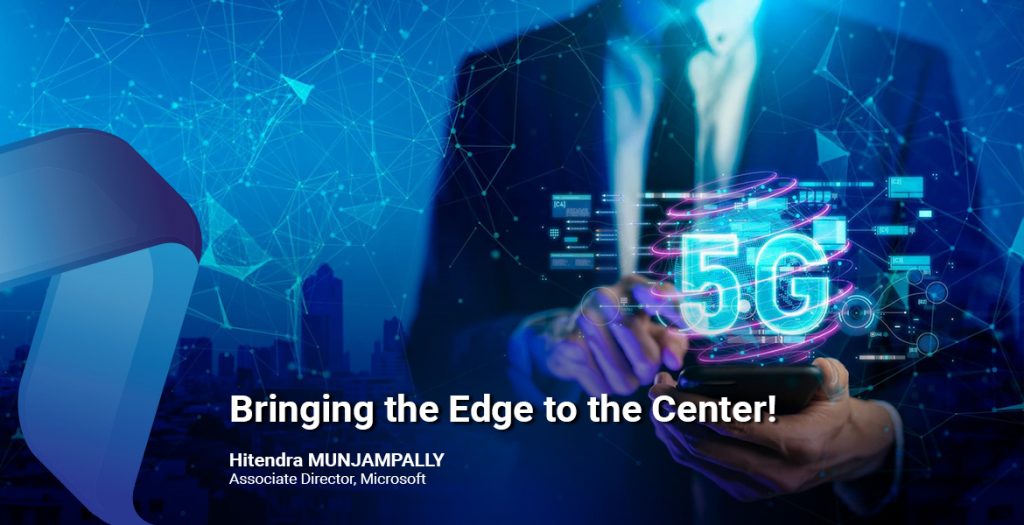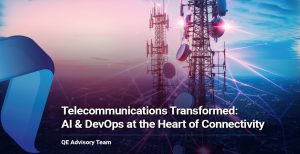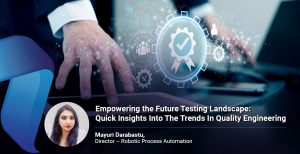How the Trifecta of 5G, AI, and IoT Can Transform How We Use Technology
We are on the brink of a new information revolution with technologies such as 5G, the Internet of Things (IoT), and Artificial Intelligence (AI) becoming a part of our daily lives. As these technologies expand the horizons of the big data economy, their convergence promises to revolutionize the way businesses and people connect to the world.
Businesses are at the leading edge of this new industrial revolution. The lightning-fast internet speeds promised by 5G significantly enhance the potential of IoT. Add the capabilities of AI into the mix and we have a digitally interconnected infrastructure that can generate unprecedented levels of data. Leveraging these three technologies together can help organizations transform their business models, make more informed decisions and improve strategic long-term planning.
- Moving away from centralized servers to a distributed model across connected devices deployed close to customer sites can allow for rapid customer-focused processes and data delivery levels.
- Data collected from 5G devices, with transmission speeds of over a gigabit per second, can open a realm of new possibilities providing an incredible customer experience, with real-time insights into their unique needs arriving without interruption or waiting time.
The fusion of these technologies can provide concentrated bursts of energy to business operations at the edge, superseding expectations with maximum scalability and flexibility.
Entering the Era of Intelligent Connectivity
A seamless and efficient integration of these three technologies—5G, IoT and AI —is termed as intelligent connectivity, a revolutionary concept with the potential to unlock many new capabilities and services. Combining AI, IoT, and 5G has opened new opportunities in Machine-to-Machine (M2M) architecture, edge computing, cybersecurity, and risk management. This trifecta is expected to create massive disruption in every industry. We are only at the beginning of this revolution.
Telenor, a leading global communications company, estimates that a 5G network can manage up to 1 million devices across a single square kilometer. GSMA estimates that by 2025 we will see 25 billion global IoT devices that are powered by AI and hyper-connected by 5G, allowing for a practically unlimited number of devices to communicate with each another. We can only imagine the paradigm-shifting advancements that will be made when high-speed, low-latency 5G networks and cutting-edge AI can access billions of digital devices, ranging from phones and laptops to TVs and household appliances.

Intelligent connectivity-enabled edge computing holds the potential to revolutionize business, leading to fundamental transformations across predictive maintenance cycles, security measures, and decision-making processes.
– Hitendra Munjampally Associate Director, Microsoft MOURI Tech
Intelligent Connectivity Gives Transformation an Edge
Edge computing, a distributed computing paradigm that brings processing and storage closer to the physical sources of data, is receiving unprecedented support with the rise of intelligent connectivity. Rather than dealing with centralized servers, the higher speeds and lower latency of 5G will let data reach a series of IoT-connected devices near the client’s data source while AI-enabled autonomous decision-making will allow for data to be processed seamlessly in real time.
Intelligent connectivity-enabled edge computing holds the potential to revolutionize business, leading to fundamental transformations across predictive maintenance cycles, security measures, and decision-making processes. Some sample use cases include:
- Industry 4.0: Intelligent connectivity will enable smart factory machines to quickly and autonomously share data to communicate with each other and thus, make decisions independently of a human operator
- Autonomous Vehicles & Transport: Intelligent connectivity and edge computing will allow autonomous self-driving vehicles to process and share large volumes of data at lightning speed. This could revolutionize safety as autonomous vehicles will be able to anticipate risks and react faster than any human being possibly could.
- Remote Health Care: Intelligent connectivity will allow remote health care providers to simultaneously provide real-time medical services to multiple patients spread out over disparate locations, with AI-enabled medical decision-making tools, such as IBM’s Watson, aiding human doctors to analyze and interpret the data obtained from IoT-enabled medical and household devices.
From The Edge to The Epicenter
We are entering an era of collaboration and co-creation. It is more important than ever for enterprises to associate with experienced partners who can help optimize the potential of new technology. Intelligent connectivity, the confluence of 5G, IoT and AI, has the power to radically change how we live, work, and play. The day is not far when ‘the edge’ will be the new center.
Author Bio:
Hitendra Munjampally
Associate Director, Microsoft
Hitendra has a strong track record of leading and enabling teams to deliver cutting-edge IT solutions to enterprise customers across Hi-Tech, Manufacturing & Health, Energy & Utilities, Travel & Logistics and Services industry domains. He has extensive experience in developing IT strategy, next-gen service offerings, pre-sales, technology solutions & accelerators to help customers digitalize and modernize their workloads, leveraging Microsoft capabilities.






